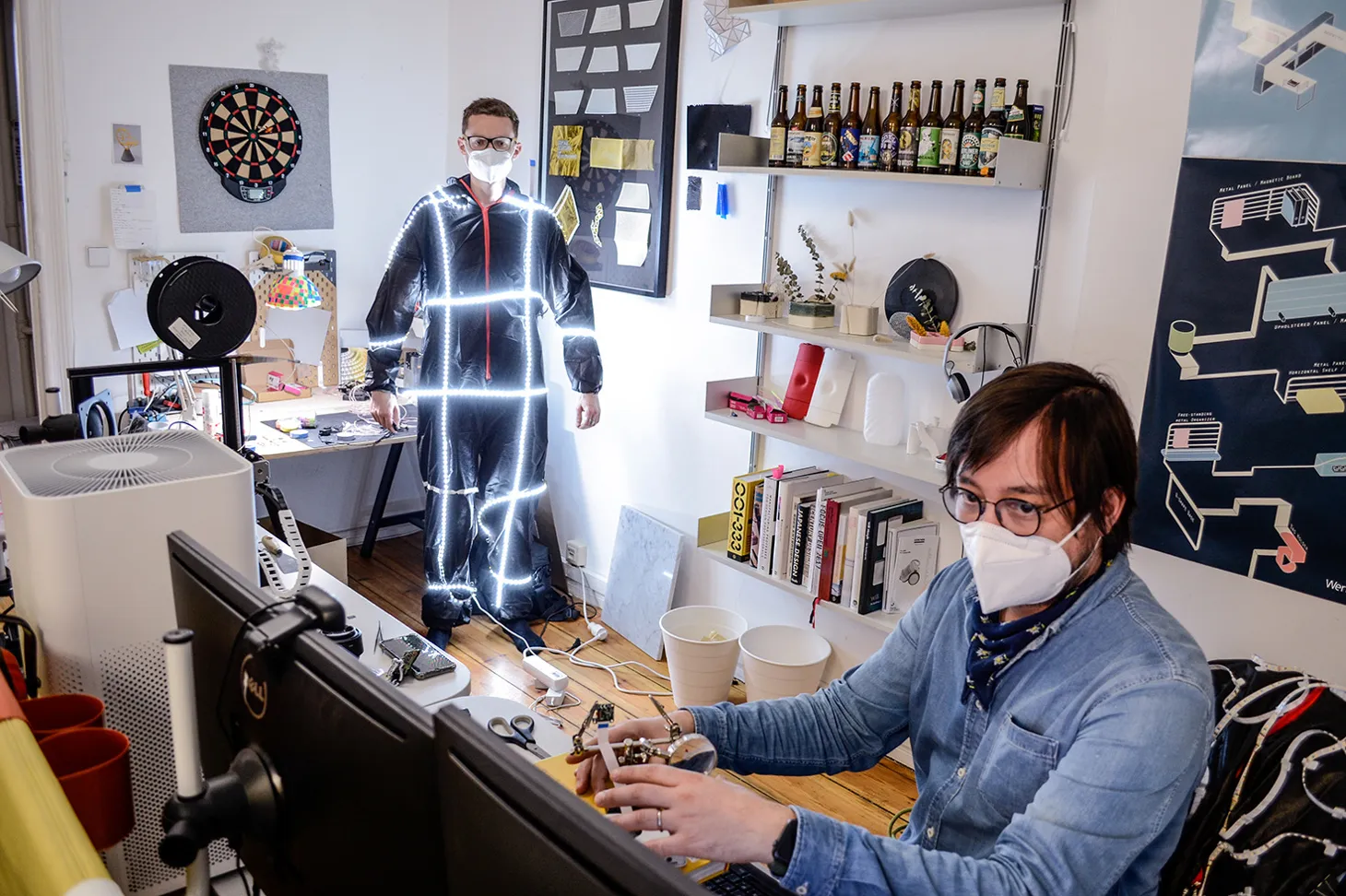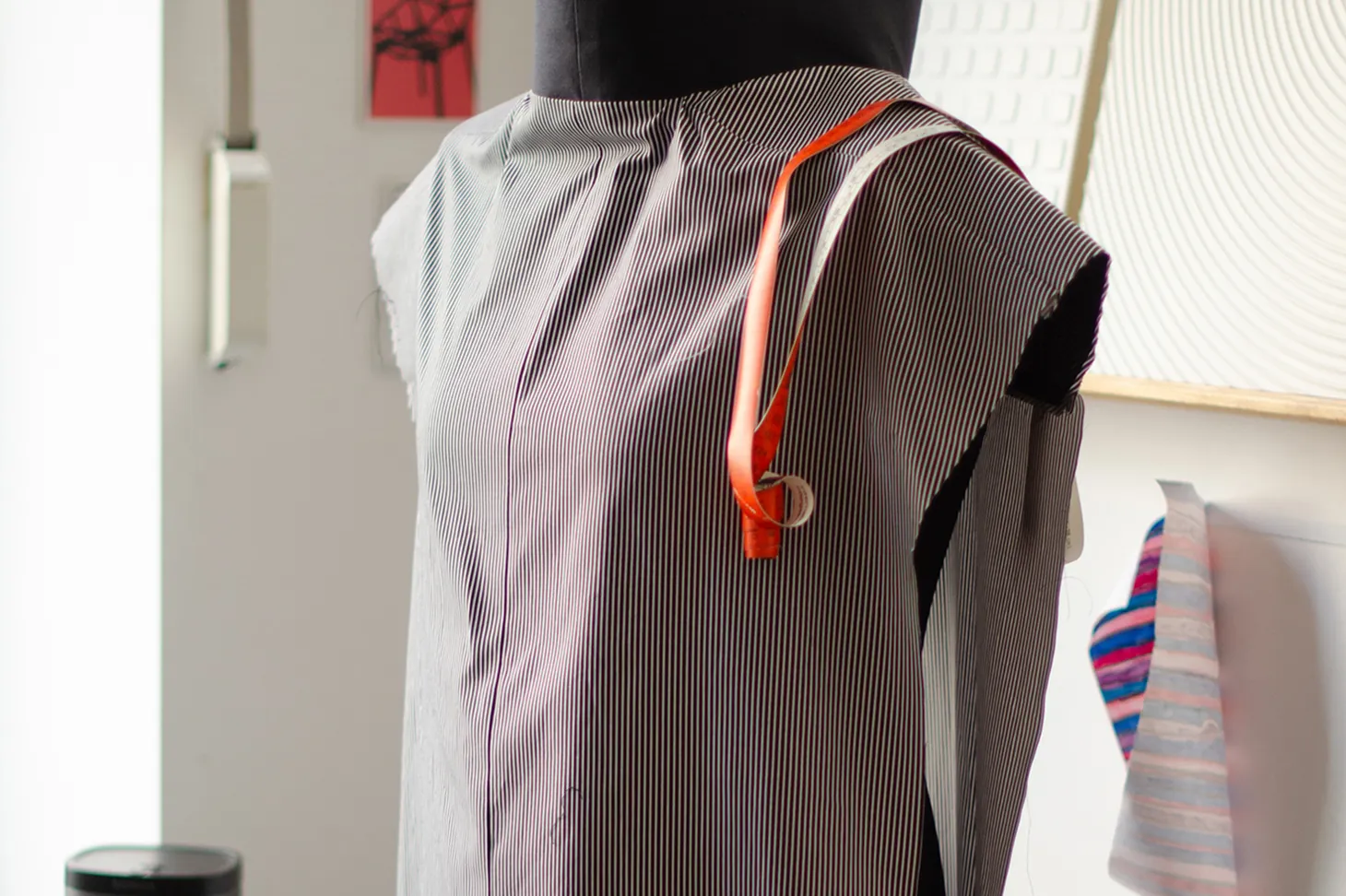The project was designed as part of the Re-FREAM consortium, a Horizon 2020 project funded by the EU. Re-FREAM is about connecting people from different fields and backgrounds to work together in connecting fashion with technology. Together with our technical partners from the Fraunhofer IZM, Stratasys, Profactor and Empa we created a garment that helps its wearer to become invisible to the virtual domain. Due to the pandemic, the co-researching phase was mainly done within our studio and shared with the partners via online meetings. Later on, we were able to work more closely together with our partners from the Fraunhofer IZM based in Berlin, especially with Christian Dils, Max Marwede and Robin Hoske.





















